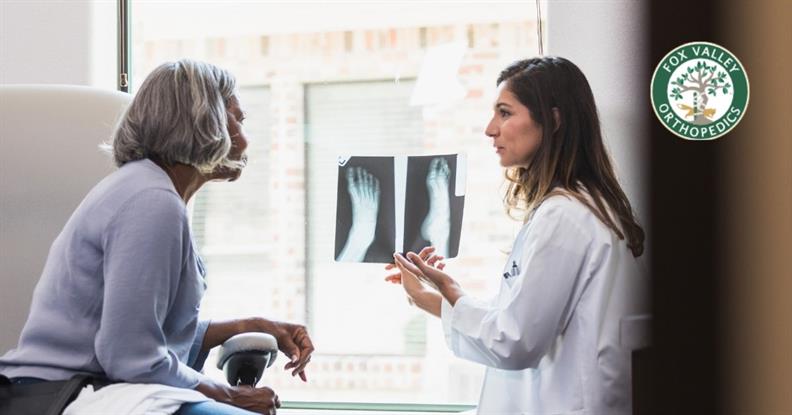The Role of Imaging (MRI/X-ray) in Diagnosing Sports Injuries
- Category: Sports Injuries, MRI, X-ray
- Posted On:
- Written By: Fox Valley Orthopedics

Understanding Sports Injuries and Imaging Needs
Getting injured while doing something you love can be disheartening, whether you're an amateur or a pro athlete. The frustration goes beyond just the pain, as it impacts your performance, routine, and even mental health. With the right tools and guidance, though, recovery becomes much more manageable.
Common Types of Sports Injuries
Fractures, Ligament Tears, and Soft Tissue Damage
Sports injuries come in many forms, but some are more common than others. Fractures often happen in high-contact or high-impact sports like football or skiing. The sudden strain or impact on bones can result in breaks that need immediate attention.
Ligament tears, such as the well-known ACL tear, are frequent in sports that require quick, sharp movements, like soccer or basketball. These injuries can be devastating, sidelining athletes for months.
Soft tissue injuries, including sprains, strains, and tendonitis, are widespread in all kinds of physical activities. These often result from repetitive motions or small accidents, and while they might seem minor at first, they can quickly limit mobility and cause lasting issues.
Why Accurate Diagnosis Matters
An injury’s impact isn’t just physical. For professionals, it can shape their career. For enthusiasts, it disrupts a passion that brings them joy. Getting the proper diagnosis, especially with advanced imaging, is crucial so that the right path to recovery can begin. That way, athletes can focus on getting back to the activities they love as safely as possible.
The Role of Imaging in Sports Medicine
How Imaging Provides Clarity
Misdiagnosing an injury can make things worse. Advanced imaging tools like MRI and X-ray ensure clarity, helping medical professionals pinpoint what’s truly causing the pain. Where physical symptoms may overlap, imaging provides the detailed insights necessary to make accurate distinctions.
Take ligament tears versus simple sprains. They might feel similar, but without imaging, it’s hard to tell the extent of the issue. Identifying the injury type ensures the treatment suits the problem, leading to more targeted recovery plans.
MRI for Soft Tissue Injuries
MRI stands out as a go-to tool for visualizing soft tissues, such as muscles, tendons, and ligaments. Injuries like ACL tears or stress fractures benefit immensely from this technology. With no radiation involved, MRI is safe for repeated use if needed. It offers peace of mind by creating a detailed map of the injury to guide treatment.
X-ray for Bone Injuries
When it comes to spotting fractures or dislocations, X-ray imaging is often the first tool professionals reach for. It’s quick, widely available, and effective at showing bone-related issues. While it doesn’t capture soft tissue details as an MRI does, its efficiency makes it a reliable first step when injuries occur.
When Do MRI and X-ray Work Together?
Sometimes, these imaging tools complement one another. For instance, if an athlete complains of knee pain, an X-ray could reveal a fracture, while an MRI might uncover subtle ligament damage. This comprehensive approach ensures no aspect of the injury is overlooked, helping athletes recover fully and avoid future setbacks.
Innovative Imaging Trends
Advancements in MRI and X-ray
Technology isn’t standing still. MRI is getting faster and more detailed, saving time while maintaining precision. Innovations in X-ray technology now deliver clearer images with a lower radiation dose, which means safer and quicker assessments.
Other tools like portable ultrasound and 3D imaging are also gaining traction. They offer new ways to assess injuries in real-time or provide detailed anatomical visuals that aid in treatment planning.
The Future of Imaging in Sports
Looking ahead, tools like Artificial Intelligence (AI) could streamline image analysis, flagging issues that might otherwise go unnoticed. Portable imaging solutions could also revolutionize how teams address injuries during events or training sessions. These transformations promise quicker, more accurate diagnoses that help athletes heal and return faster.
Supporting Athletes Through Recovery
Practical Considerations
Imaging isn’t just about identifying an injury; it also has to fit into an athlete’s budget and access. MRIs tend to cost more, whereas X-rays are a cheaper, quicker option. For amateur athletes in particular, understanding insurance coverage is important to minimize financial stress.
Building the Right Healthcare Team
Recovering from a sports injury takes teamwork. Medical professionals who specialize in sports medicine provide crucial guidance throughout the process. They’ll know when to use imaging and how to develop personalized recovery plans. Seeking second opinions can also be a powerful step in confirming diagnoses and ensuring the best care.
Get Back in the Game
Sports injuries shouldn’t hold you back longer than they need to. Whether addressing a fracture, a ligament tear, or unexplained pain, imaging plays a key role in pinpointing the issue and starting the healing process. Don’t wait to feel better and return to what you enjoy most. Take a proactive stance with Fox Valley Orthopedics.
When you’re ready to take the next step toward recovery, call (630) 584-1400 for trusted guidance and imaging services that are fully tailored to your needs.



